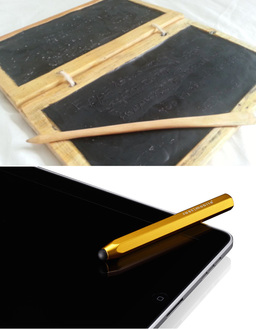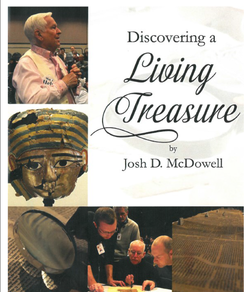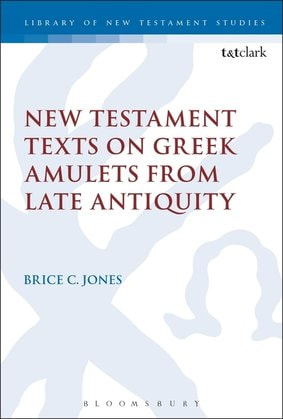 I just listened to a highly stimulating lecture on YouTube by Dr. Alison Tara Walker (Seattle University) on the paleographical ductus in the digital age. In palaeography, or the study of ancient handwriting, the "ductus" refers to the graphic character of strokes produced by a stylus. These patterns help us decipher letter-forms and understand a scribe's overall style of handwriting. Walker's main question is: Where is the ductus in modern tablets and mobile devices? She highlights two competing views: one by Heidegger and the other by Nietzsche. Heidegger thought that the type-writer removes the ductus altogether. Nietzsche argued that the typewriter retained the ductus. In other words, the ductus is still alive in the typewriter. As someone who studies ancient handwriting, I found the questions in this lecture quite stimulating. It raised many questions such as the link between mind and hand, technology and the flow of an idea, finger as stylus, writing processes, the materiality of writing, and so on. Watch the lecture below! Here is the abstract of Walker's lecture: "Paleographers have long used the term _ductus_ to articulate the movement and sensory experience inherent in the process of writing and to describe the flow of letterforms from the hand to the page. But with the advent of the keyboard and touchscreen, how do the gestures of writing change? This talk explores the connection between gesture, the sound of writing, and how the _ductus_ of the writing instruments we use can help or hinder the writing process. First, the talk examines the change in _ductus_ between handwriting and the typewriter. From there, the focus turns to the digital age of writing by examining tablets, smart-phones, and new writing technologies in order to explore the unique _ductus_ of the digital era."
1 Comment
 P.J. Parsons P.J. Parsons Renowned Oxford papyrologist Peter J. Parsons describes the process of editing papyri from Oxyrhynchus: "The pleasures of the [Oxyrhynchus] project have been threefold. First, there is the pleasure of the chase: open a box of unpublished papyri, and you never know what you will find — high poetry and vulgar farce, sales and loans, wills and contracts, tax returns and government orders, private letters, shopping lists and household accounts. Then, there is the pleasure of comprehension: as you decipher the ink, still black after two thousand years, you begin to make words out of letters and then sentences out of words; the eye looks for shapes, and the mind looks for sense, and the two in alliance will (all being well) turn a string of symbols into intelligible text. Thirdly, your new text finds its place within larger structures. A fragment of Greek Comedy may add a new scene to a play already known from other fragments; an edict of the governor of Egypt may join other documents to hint at reform and politics; the lease of a vineyard will contribute evidence about price-inflation and consumer preference. Throughout the process, the researcher becomes aware of a unity. Every fragment of every kind in every box belongs in one historical and geographical context — the reading, writing and working citizens of Oxyrhynchus, the City of the Sharp-nosed Fish." Excerpt from: Parsons, P.J. City of the Sharp-Nosed Fish: Greek Lives in Roman Egypt. London: Weidenfeld & Nicolson, 2007, xxvi-xxvii. Oxyrhynchus Papyri (Subtitled) from firebird films Ltd. on Vimeo.  Several months ago, I blogged about an event called "Discover the Evidence" that took place on 5-6 December 2013. Readers may remember that it was at this event that hundreds of papyrus fragments were apparently extracted from mummy masks by Scott Carroll, a controversial American collector of antiquities. It was reported that "each attendee actually participated in the extraction of papyri fragments [sic] from ancient artifacts." [This last quote was taken from Christian apologist Josh McDowell's website before it was later quietly deleted.] A reader of this blog has brought to my attention a booklet titled "Discovering a Living Treasure," which has now been made available through Josh McDowell's website. For those who are following my posts about the Green Collection, Scott Carroll, mummy masks, cultural artifacts and heritage, ethical practices in the acquisition and use of papyri and other antiquities, and so on—this piece will be of interest to you. The booklet, authored by Josh McDowell, gives many more details about the "Discover the Evidence" event, the artifacts handled there, and those who were involved (note especially McDowell and Carroll's involvement). We learn that Josh McDowell is now the owner of Christian papyri. We also learn more about how he intends to use them. Readers can take it from here. I think everyone knows how I feel about these issues already. |

Available at Amazon!
Archives
June 2020
Categories
All
|